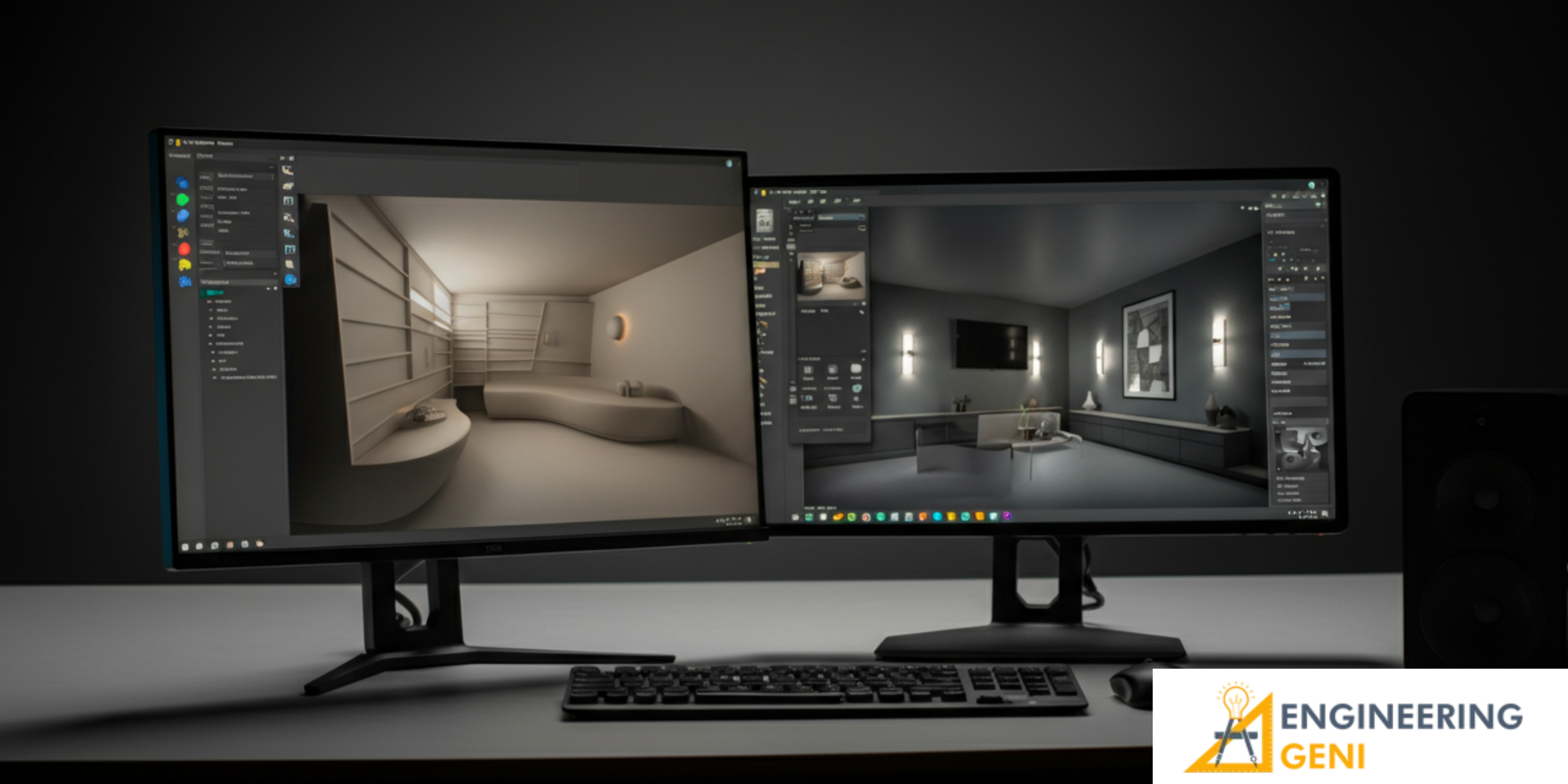What is 3D Rendering and how does it work? A complete Guide
3D renders, in terms of descriptions, are only an absolutely real-considered rendering that comes with 3D images.
Some claims have it that 3D Rendering means a super-realistic photo of the building or product seen online, mistaking it for a real one. Within the several events of 3D rendering behind such scenes-anything from video games and animations to real estate and architecture and product marketing really makes this rendering a way of presenting reality before the actual becoming.
Let’s see its operating methods, types, and the reason behind its prominence today.
How does 3D rendering work?
Though occasionally used interchangeably, the term 3D rendering is the preferred term for this process. So, you’re comparing with a super-realistic photo of an object that might as well be called digital photorealism. What sets it apart is that instead of being captured by a camera from real-life objects, the designer creates a digital 3D model on the computer. When the model is ready, it is then “rendered” to create a final image or video that is as realistic as possible.
Overall, 3D product renders work as follows:
- Modelling: You should start by making a model that represents the object with its four dimensions: shape, size and structural features.
- Texturing: Putting textures on a model adds authenticity such as the look of wood, shine on metals.
- Lighting: In photography, lighting is critical. The designers simulate either natural or artificial lights to evoke mood.
- Rendering: Finally, all of the data is processed through different layers of the software to produce the final image or animation.
So, for instance, 3D product rendering is utilized by companies before they even make a product for visualization and marketing purposes without a prototype.
Types of 3D Rendering
There are many distinct kinds of 3D rendering, each of which serves a different purpose. Here are the most popular:
- Real-Time Rendering
It is mainly employed in video games and virtual reality. It takes place real-time when moving or manipulating a screen element. It is quite rapid and very responsive, but sometimes compromises quality to provide such speed.
- Offline Rendering:
It is not an instant process, but it produces extremely realistic pictures. This method is widely used in movies and advertisements, as well as in architectural CAD drafting, where visual fidelity is crucial. In fields like product design and architectural visualization, professionals prioritize quality and realism over speed to ensure the final presentation accurately reflects the concept and vision.
- Exterior and Interior Rendering
This is used in the real estate and construction industry, as it facilitates imagining how a house or structure will physically look like-from inside as well as outside.
- 3D Product Rendering
This type of rendering is maybe the most important to e-commerce and advertising. The brand actually can show its product in a variety of different colors, angles or environments without having to actually manufacture each version.
Each type of 3D rendering saves time, costs, and enhances the decision-making process.
3D Rendering Versus 3D Modeling
- Many confuse 3D rendering with 3D modeling; in fact, they are not the same.
- First, it is 3D Modeling. It is like making a digital sculpture. It constructs the shape and form of the object.
- Now comes the 3D Rendering part. Textures, light, and shadows are added to the model and a life-like picture or animation is created.
- Think of 3D modeling as creating the skeleton and 3D rendering as adding skin, clothes, and personality. Both complete the picture, but rendering is what turns the final image realistically.
The future of 3D Rendering
Exciting prospects are on the horizon for the rapidly developing world of 3D rendering. Some trends to keep on eye on include:
- AI-Powered Rendering: The use of artificial intelligence to optimize the speed and performance of rendering.
- Virtual and Augmented Reality: There is a need for high quality rendering done in real-time for virtual reality and augmented reality immersion.
- Cloud Rendering: Rendering on local machines is being replaced with cloud-based systems. This enhances outcomes and streamlines collaboration.
- Interactive 3D: E-commerce websites and applications now enable users to rotate, zoom, or customize a product in real-time.
Enhanced hardware and software will make 3D rendering faster, more cost-effective and even more lifelike than before.
Why Choosing the Best 3D Rendering Partner Matters?
For 3D rendering projects, top of the line quality is essential. Trust and engagement from customers can be earned with professionally rendered images, whereas poorly rendered ones will lessen credibility and may confuse viewers.
Here’s how the right partner can impact your business:
- Saves times: Experts do not need extensive time to ensure their work is of high quality.
- Customization: Professionals are well-versed in the branding requirements, they provide bespoke visuals for the business.
- Technical Proficiency: Creativity aside, rendering errands also need active capabilities of its instruments and software.
- Consistency is key: a dependable team makes sure that all your visuals maintain a cohesive, professional appearance.
Searching for the Perfect 3D Rendering Partner?
Engineering Geni provides top-notch, customized 3D rendering services that truly bring your concepts to life. With the innovative team and state-of-the-art tools, Engineering Geni makes sure your designs are not only noticed but also unforgettable.
Bottom Line:
Currently, 3D rendering is necessary and popular in several industries, notably in the architectural field. 3D rendering helps when you are creating a home by showing the results before things are built. You will be skilled at changing your design plans into impressive images.




